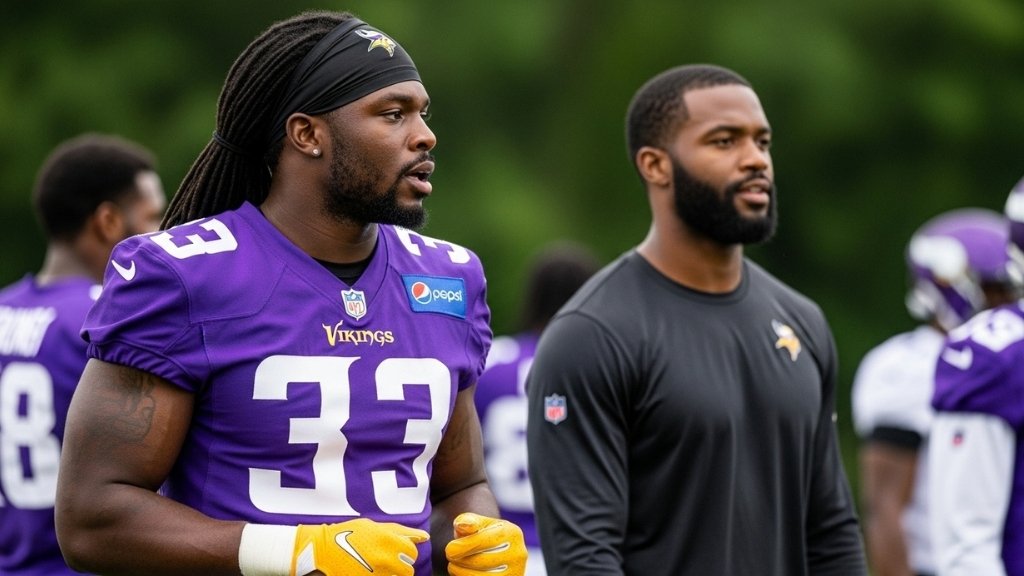The Minnesota Vikings are shelving starting running back Aaron Jones on injured reserve due to a hamstring injury, a roster move that forces him to miss at least four games. For a team that leaned on Jones’ veteran vision and burst to stabilize early downs, the timing is significant: the Vikings now have to navigate a multi-week stretch without their most experienced ball carrier while keeping the offense on schedule.
What “injured reserve” actually means here
Under current NFL roster rules, placing a player on IR immediately frees a 53-man roster spot but triggers a four-game minimum absence. After those four games, the club can open a 21-day practice window. During that window, the player can practice without counting on the active roster, giving medical staff and coaches time to judge game readiness before a formal activation. If the player isn’t activated during that period, he must remain out.
For Jones, that translates to a multi-week reset focused on getting the hamstring fully quiet before any push to return. Soft-tissue injuries are notoriously tricky—rushing back often leads to re-aggravation and a longer layoff—so the IR designation is a conservative, team-friendly way to avoid the week-to-week limbo of questionable tags.
Why the Vikings chose IR rather than “day-to-day”
Hamstrings can fool you: a player might feel fine in linear drills, only for the muscle to flare under the stress of full-speed cuts, decelerations, and contact. IR removes the pressure to test the injury in live action and gives the training staff a clear runway for progressive rehab—eccentric loading, graded sprinting, and football-specific change-of-direction—before Jones is asked to handle game-speed reps again.
It also provides roster clarity. Instead of carrying an injured reserve star who might or might not be available Sunday, the Vikings use his spot on a healthy contributor while mapping a concrete timeline for Jones.
How Minnesota can recalibrate the backfield
Expect the Vikings to shift toward a committee with a downhill early-down option complemented by a change-of-pace back who can handle screen and draw action. On third downs, pass protection and hot-route reliability will drive snap counts. Coaching points likely to surface:
- Run design: More inside/duo and gap concepts to keep the reads simple for the next man up, paired with selective outside zone to threaten the edges without overstressing the retooled unit.
- Tendencies: RPO tags and motion at the snap to lighten boxes and create cleaner fronts for whoever is carrying the ball.
- Protection rules: With the lead back sidelined, the pass-pro back becomes critical—ID’ing the MIKE, sorting creepers, and keeping the quarterback clean.
Impact on the passing game
Jones’ absence affects the play-action menu. Defenses will challenge Minnesota to prove the run threat without him, so the Vikings can counter with condensed formations, crossers off max-protect looks, and quick-game answers on early downs to stay ahead of the sticks. Expect a modest uptick in targets to tight ends and running backs as extensions of the run game—swings, arrows, and option routes—to maintain efficiency.
Special teams and roster mechanics
IR opens an avenue for practice-squad elevations or a short-term veteran addition. That flexibility matters in stretches with limited recovery time between games. Minnesota can elevate a back on a game-by-game basis while Jones rehabs, preserving cap flexibility and avoiding long commitments.
What to watch over the next month
- Practice window timing: When the four-game minimum expires, the team’s decision to start (or delay) the 21-day window will be the clearest sign of where Jones’ hamstring truly is.
- Explosive plays without Jones: The Vikings don’t need home runs every week, but they do need chunk gains—20-yard runs, screens that crack for 15+—to keep defenses honest.
- Short-yardage efficiency: Converting third-and-short and red-zone carries will reveal whether the committee replicates Jones’ knack for finishing runs behind his pads.
- Snap distribution: Follow who wins the two-minute drill role; that’s often the staff’s “trust” tell at running back.
Big-picture outlook
IR is not season-ending in this case; it’s a reset aimed at securing Jones’ availability for the longer haul. If the Vikings survive the next four games around break-even and keep offensive efficiency near league average, they’ll be positioned to fold Jones back in without having overextended him. The measured approach here—accept short-term pain to avoid long-term recurrence—is exactly how teams protect a primary runner from the revolving-door trap of hamstring injuries.







